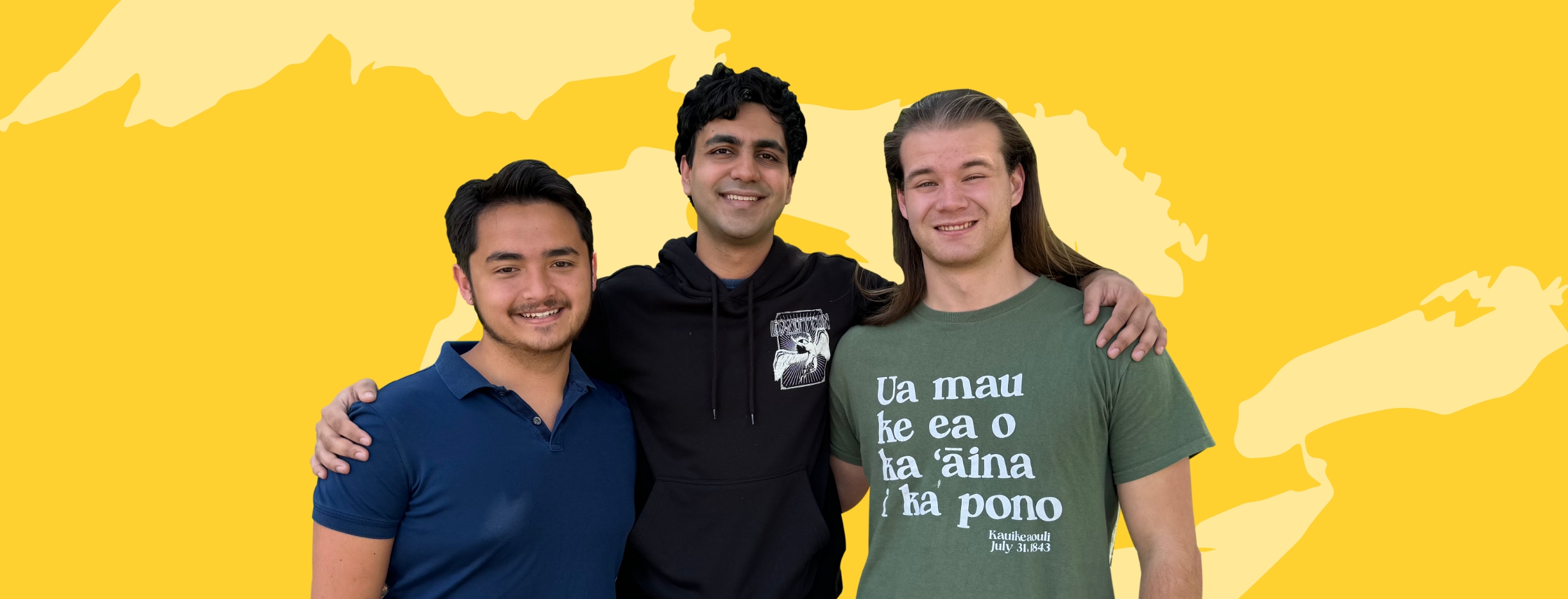Readable, Comprehensible and Beautiful
HMC team’s mathematical model and paper win top ICM honor
Of the five teams the College fielded for the 2024 International Mathematical Contest in Modeling and Interdisciplinary Contest in Modeling (MCM/ICM), one team had an extraordinary result.
The team of Max Collins ’25 (mathematics major), Paco Navarro ’25 (math and physics) and Arjun Taneja ’25 (computer science and math) earned the designation of Outstanding in the 26th annual Interdisciplinary Contest in Modeling, placing in the top 18 out of 10,000 participating ICM teams. Their solution was recognized with a Mathematical Association of America Award and with the International COMAP Scholarship Award, given to the Top 4 MCM/ICM teams. COMAP awardees received $9,000 for the team and $1,000 for the school.
The three friends developed a strong rapport by taking classes together and working on various projects. “Teaming up with them is what made the contest worth doing,” says Taneja.
Before the contest, Collins, Navarro and Taneja received advice from Harvey Mudd mathematics professors Susan Martonosi and Jamie Haddock—co-coordinators of the MCM/ICM Seminar—and Heather Zinn-Brooks. Martonosi and Haddock gave all Harvey Mudd teams practical advice on how to approach the contest and how to manage time. Students work in teams of up to three students and have 96 consecutive hours to develop a mathematical model and write a formal paper describing their work. The team’s papers are judged not only on their scientific and mathematical accuracy, but also on their clarity of exposition, insight and creativity. Collins, Navarro and Taneja spent most of their time bouncing ideas off each other and making their report “readable, comprehensible and beautiful.”
Team members commented, “As we have learned from our time at Mudd, these are extremely important but often overlooked parts of math communication.”
Their winning report was titled, “Dynamic Dams Model: A Multigranular, Human-Centered Approach for Modeling Water In The Great Lakes.” One of three ICM problems—the others dealt with the sustainability of property insurance and reducing illegal wildlife trade— the challenge required teams to develop a dynamic model of the water levels in the Great Lakes. After determining the optimal water levels for the system, teams established algorithms that could be used by the two existing water-level control mechanisms to maintain optimal levels within the system.
Navarro really liked this problem because, being from Minnesota, he has a personal connection to the Great Lakes. Team members also selected the problem because the theme was operations research/network science-related. The three had taken an operations research course with Professor Martonosi in fall 2023 and really enjoyed it.
“We could see how the material we learned in class could be readily applied to this problem, so we concluded there was a good deal of potential in doing it,” they said.
“This is quite an achievement, and we are so proud of these students,” says Martonosi.
Ben Fusaro, creator of the contest in 1983, described the MCM/ICM: “Most problems that come up in business, government or industry are solved by teams, are likely to take many hours, and would not be restricted to using only pencil and paper. Moreover, the answer must be presented to an executive who wants a clear, understandable response.”
A selection of the Outstanding summaries will be featured in The UMAP Journal, along with commentaries from the problem authors and judges.
